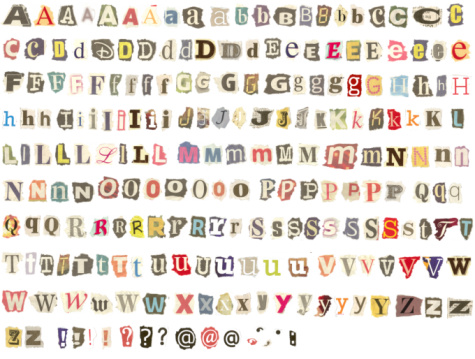
Think about the amount of reading everyone does every day. Street signs, maps, books, magazines, Facebook, building signs, websites, and on and on. Each of those mediums needs a typeface to convey its message effectively, and hopefully aesthetically pleasing as well. Fonts are fun to play around with, but any graphic designer will tell you that choosing a font is an art. There’s thousands to choose from, each with its own personality and connotations. Here are some guidelines on how to narrow down the lengthy list and choose a font.
First, ensure that the typeface is appropriate for your content. Think of your end goal. What are you trying to achieve with this material? Who is your audience? It’s important to match the typeface to the topic. If the material were sobering and serious, it would be inappropriate to use a fanciful, scripted font. Be sure to consider what your message is trying to convey before you choose a typeface. Every font has a mood and a personality to it. Be sure to align that with the mood and feel of your presentation.
Keep it simple. While design is an essential part of a great presentation, clear communication is most important, so make sure the audience doesn’t lose any meaning at the expense of a fancy font. Limit yourself to using one or two fonts throughout the presentation. Too many different fonts might distract the audience, and effective fonts are something that should live in the background of your presentation. The audience shouldn’t necessarily notice them in any particular way; they should simply work with the content presented. Choose fonts that flow with the theme, narrative and content of your presentation.
While simplicity is important to communicate with ease, it’s also important to choose fonts that stand out. Be bold and choose a font that will catch the audience’s eye. This can also be accomplished by using large sizes. A good guideline to follow is from Guy Kawasaki, who says to use fonts that are at least 30 points or bigger. Touché. There’s nothing worse than having to squint to try and read what’s on the slide in front of you. Bigger is better.
Now you should be consider whether a serif font or a san serif font is appropriate. Serif fonts are those with little modifiers hanging off the edges of letters. Think Times New Roman. San serif fonts are without those embellishments; they’re simple and straight. Think Arial. Serif fonts are great for reading lengthy material, whereas san serifs are great for short lengths and therefore, great for presentations.
Determine the legibility of the font. Is there enough spacing between the lines? If you’re using numbers in the presentation, do you like those of the font style? Don’t shy away from using conventional letterforms, but try to find a font that plays with conventions and offers something a little more edgy. When used correctly, a font should communicate information effectively and catch and hold the audience’s attention.
Also, avoid using capital letters in a presentation. IT LOOKS LIKE YOU ARE SCREAMING AT THE AUDIENCE. If you want to emphasize words, use italics or bigger fonts. Don’t yell at your audience. Along the same lines, be conservative about how you use punctuation. Exclamation points should only be used when something is especially exciting, and only in rare cases (or maybe not at all). Using one or more exclamation points is akin to telling someone how to feel about the words they just read. Let them decide for themselves.
Lastly, avoid using fonts that seem clichéd. For example, if your material is fun and light and cheerful you might think of using Comic Sans as your font. Think again (and never use Comic Sans). That particular font has too many negative, stereotypical connotations associated with it. Don’t use a font that brings to mind some banal connotation.
Be original and inventive when selecting a font. There’s a seemingly unlimited number to choose from, so it’s certainly possible to find something that fits your presentation to a tee. Have fun with it. Pretend like you’re a member of the audience. What fonts would you like to see?
